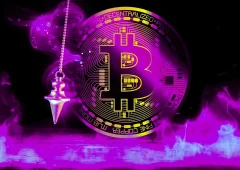How Are Token Unlocks Affecting Cryptocurrency Prices?
06.12.2024 16:30 1 min. read Alexander Stefanov
A recent Keyrock analysis reveals that token unlock events often lead to downward price pressure, with around $600 million in previously locked tokens circulating on predetermined schedules.
These unlocks affect teams, investors, and ecosystem funds, and traders need to time the market carefully, as full price effects can take up to 30 days to materialize.
Before tokens are unlocked, preemptive selling and hedging by investors contribute to early price dips, typically stabilizing within two weeks. While large unlocks might seem impactful, their effects tend to unfold gradually due to partial selling or hedging.
Frequent smaller releases, however, create consistent but less dramatic downward pressure. Retail anticipation and institutional hedging often trigger price declines up to 30 days before the unlock event.
The report also highlights how the recipient of tokens influences market reactions. Unlocks for teams often cause significant price drops due to lack of coordination, while ecosystem unlocks (used for liquidity or infrastructure) stabilize prices.
Investor unlocks tend to have a controlled, minimal impact, as early investors use strategies like OTC sales to prevent market disruption.
Despite the risks, token unlocks offer opportunities. The best time to enter the market is about two weeks after a major unlock, once volatility has subsided. For exits, traders should sell 30 days before the event, as prices typically start falling in anticipation.
-
1
Ethereum ETF Inflows Hit Record High as Price Jumps Past $3,400
17.07.2025 17:12 2 min. read -
2
Chainlink Surges Past $15 Resistance as Tokenization Narrative Fuels Breakout
13.07.2025 17:20 2 min. read -
3
Ethereum Surges 3.5% to Break Above $3,700
20.07.2025 11:46 2 min. read -
4
What’s Next for XRP if it Breaks Above $3? Analyst Outlines Bullish Targets
13.07.2025 16:00 2 min. read -
5
Ethereum Jumps 8% to Reclaim $3,000
11.07.2025 14:01 2 min. read
Bonk Price Prediction: BONK Nears Key Area of Support – Is It Ready for a Big Bounce?
Bonk (BONK) has gone down by 7.6% in the past 24 hours and currently stands at $0.00002800. Although the token has been on a downtrend for a few days, it is approaching a key area of support that could favor a bullish Bonk price prediction. Trading volumes have gone down by 18% during this period, […]
Santiment Highlights 6 Most Discussed Altcoins Amid Crypto Volatility
As Bitcoin and the broader altcoin market continue to swing unpredictably, blockchain analytics firm Santiment has identified six altcoins that have sparked intense interest across social media platforms.
Ethereum Turns 10: Celebrating the Genesis Block That Changed Crypto Forever
On this day ten years ago—July 30, 2015—a revolutionary chapter in blockchain history began.
Standard Chartered: Ethereum Treasury Firms Now Form a Distinct Investment Class
A new report from Standard Chartered highlights that publicly traded companies holding Ethereum (ETH) as a treasury asset have emerged as a unique and fast-evolving asset class, distinct from traditional crypto vehicles such as ETFs or private funds.
-
1
Ethereum ETF Inflows Hit Record High as Price Jumps Past $3,400
17.07.2025 17:12 2 min. read -
2
Chainlink Surges Past $15 Resistance as Tokenization Narrative Fuels Breakout
13.07.2025 17:20 2 min. read -
3
Ethereum Surges 3.5% to Break Above $3,700
20.07.2025 11:46 2 min. read -
4
What’s Next for XRP if it Breaks Above $3? Analyst Outlines Bullish Targets
13.07.2025 16:00 2 min. read -
5
Ethereum Jumps 8% to Reclaim $3,000
11.07.2025 14:01 2 min. read


